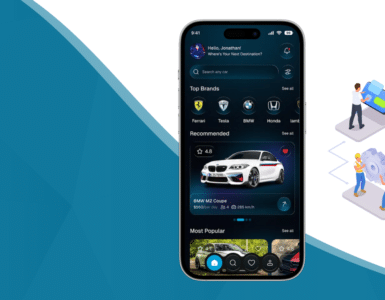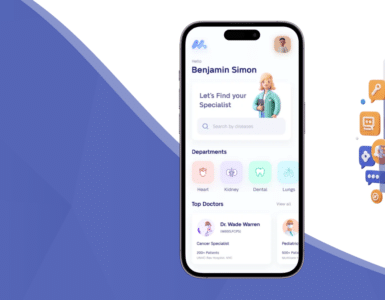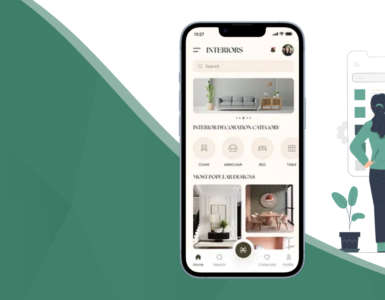Irrespective of whether you’re a foodie or not, the essence of a delicious dish can water your mouth in seconds. Now imagine enjoying that same dish at home without stepping out—convenience at its best! Someone once imagined this concept and turned it into reality by creating the first food delivery app. Since then, there has been no turning back.
Consumers now recognize the tremendous benefits of food ordering apps, which has led to a notable surge in food delivery app development.
Why Now Is the Right Time?
With the pandemic reshaping lifestyles and lockdowns becoming routine, food delivery apps have emerged as lifesavers. They not only satisfy cravings but also help those who haven’t mastered cooking. This makes it the prime time to invest in food ordering application development. If you’re already in the food business, an on-demand food delivery app can significantly expand your reach and revenue.
The Rise of Food Delivery App Development & Global Market Trends
The global market for on-demand smartphone apps has witnessed significant growth over the last few years. Specifically, the food delivery sector is booming with global players like Swiggy, Zomato, Uber Eats, and FoodPanda capturing vast market shares. Consumers are drawn to the speedy delivery, affordable pricing, and the comfort of home dining.
Smartphone penetration plays a major role in this industry’s growth. Restaurants are now eagerly investing in food delivery application development and launching their mobile apps to boost customer engagement and sales. According to a Forbes report, the global food delivery market is expected to surpass $200 billion in the near future.
This figure alone reveals the immense growth potential of this sector.
In addition, many food delivery apps now offer advanced features like table reservations, digital menu cards, and mobile ordering. With innovations like GPS tracking and high-speed internet, restaurants can monitor deliveries in real-time and enhance overall efficiency.
More entrepreneurs are now stepping into this space, realizing the demand for automation and the competitive edge that comes with embracing technology.Looking to build your own food delivery app? Check out this ready-made UberEats clone Flutter app on CodeCanyon — perfect for businesses wanting a head start!

Key Features of On-Demand Food Delivery App Development
If you are planning to develop a food delivery app, it’s essential to know its core components. Here’s a breakdown of the most important features:
1. Customer App
The end-user app must allow customers to:
- Browse menus
- Place and track orders
- View restaurant details
- Estimate delivery time
- Access customer support
- Use multiple secure payment gateways
A seamless and intuitive UI is key to customer retention.
2. Admin Panel
The admin dashboard is vital for managing the app ecosystem. It helps in:
- Managing users and restaurants
- Overseeing orders and deliveries
- Generating reports
- Setting commission rates
This centralized system ensures smooth business operations.
3. Restaurant App
This panel lets restaurants:
- Accept and manage orders
- Monitor payment and delivery status
- Collect customer feedback
- Review weekly, monthly, and yearly revenues
It’s essentially a tool for operational efficiency.
4. Delivery Provider Panel
This is for the delivery personnel who ensure timely food delivery. Key features include:
- Order notifications
- Live tracking
- Customer contact info
- Route optimization
Types of Food Delivery Apps
There are three main types of food delivery apps that businesses typically opt for:
1. New Delivery Apps
- Restaurants don’t employ delivery staff.
- Instead, they collaborate with third-party logistics services.
2. Aggregator Apps
- Work as a third-party platform.
- Customers place orders via the app, and delivery is handled separately.
- Ideal for small and mid-sized restaurants.
3. Full-Stack Delivery Apps
- The business manages everything in-house—ordering, cooking, and delivery.
- Offers full control and often better customer experience.
Step-by-Step Guide to Food Delivery App Development

Here’s a brief roadmap for launching your food delivery app:
- Define your business model and operational flow.
- Identify your target audience and select a revenue model.
- List out essential and advanced features your app will support.
- Choose the right tech stack for backend and frontend development.
- Develop and test a Minimum Viable Product (MVP).
- Gather user feedback, fix bugs, and enhance the app.
- Launch your app on iOS and Android platforms.
- Implement pre- and post-launch marketing strategies.
Need expert help with app development? Connect with Siddhi Infosoft, a trusted name in delivering customized mobile solutions.
Revenue Models: How Food Delivery Apps Earn Money
Food delivery apps typically generate revenue through three main channels:
1. Delivery Fees
Charged based on:
- Distance
- Time of day
- Order size
Some apps also apply peak hour surcharges.
2. Commission
- The primary income source for most platforms.
- Apps charge restaurants a commission fee per order, which may vary based on agreement.
3. Advertisements
- Restaurants pay to promote their listings on the app.
- Enables visibility and drives more orders while generating ad revenue.
Learn more about how on-demand apps monetize to understand successful strategies.
Conclusion
If you’re planning to boost your restaurant business, then investing in a food delivery app is one of the smartest decisions you can make today. The future of dining is mobile-first, and the above information provides everything you need to kickstart your app development journey. Whether you choose to build from scratch or use a ready-made clone solution, make sure to prioritize user experience, real-time features, and scalability.
With the right approach and partner, your food delivery app can become a game-changer in the digital dining revolution.
























